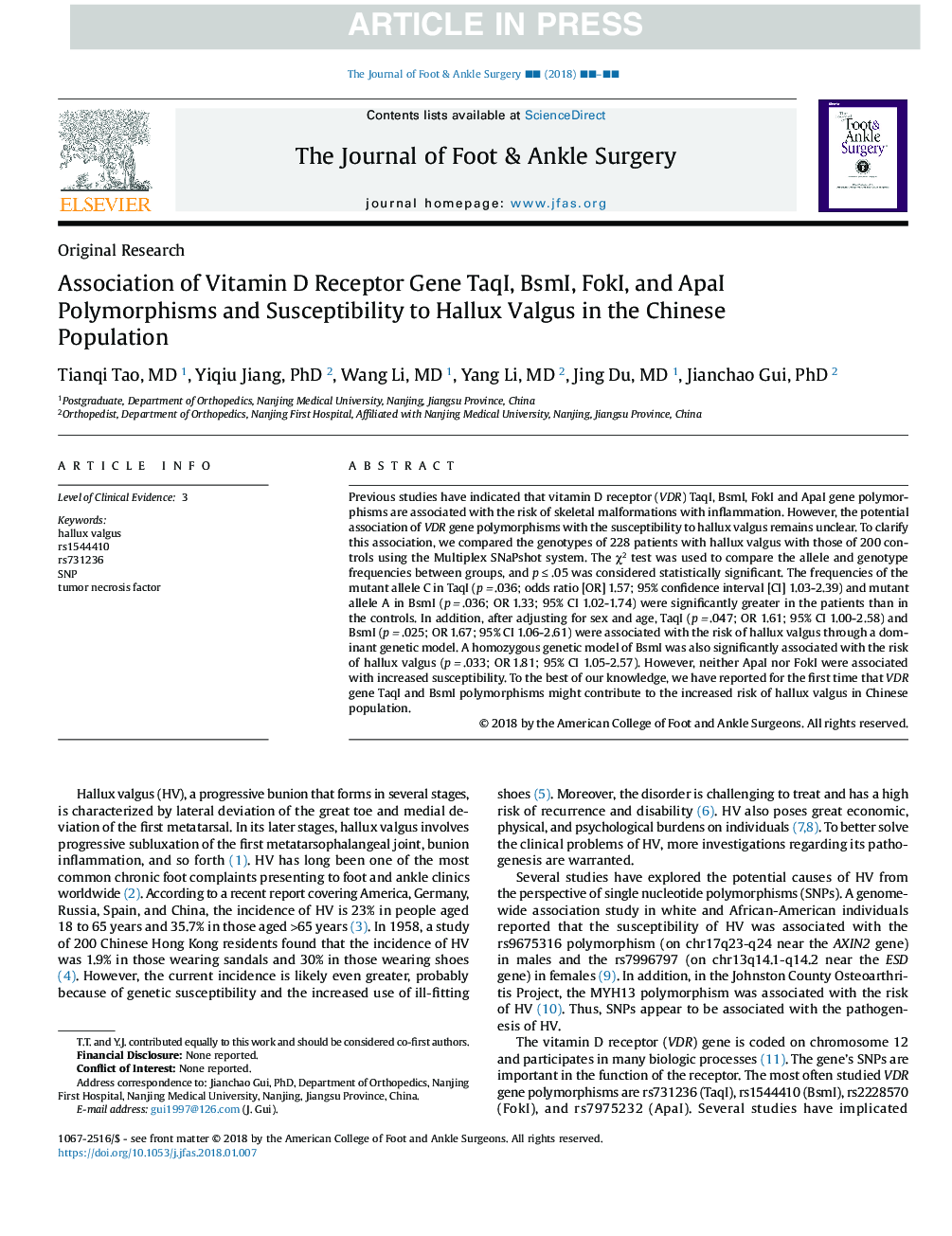| Article ID | Journal | Published Year | Pages | File Type |
|---|---|---|---|---|
| 8602856 | The Journal of Foot and Ankle Surgery | 2018 | 6 Pages |
Abstract
Previous studies have indicated that vitamin D receptor (VDR) TaqI, BsmI, FokI and ApaI gene polymorphisms are associated with the risk of skeletal malformations with inflammation. However, the potential association of VDR gene polymorphisms with the susceptibility to hallux valgus remains unclear. To clarify this association, we compared the genotypes of 228 patients with hallux valgus with those of 200 controls using the Multiplex SNaPshot system. The Ï2 test was used to compare the allele and genotype frequencies between groups, and p ⤠.05 was considered statistically significant. The frequencies of the mutant allele C in TaqI (pâ=â.036; odds ratio [OR] 1.57; 95% confidence interval [CI] 1.03-2.39) and mutant allele A in BsmI (pâ=â.036; ORâ1.33; 95% CI 1.02-1.74) were significantly greater in the patients than in the controls. In addition, after adjusting for sex and age, TaqI (pâ=â.047; OR 1.61; 95% CI 1.00-2.58) and BsmI (pâ=â.025; ORâ1.67; 95% CI 1.06-2.61) were associated with the risk of hallux valgus through a dominant genetic model. A homozygous genetic model of BsmI was also significantly associated with the risk of hallux valgus (pâ=â.033; ORâ1.81; 95% CI 1.05-2.57). However, neither ApaI nor FokI were associated with increased susceptibility. To the best of our knowledge, we have reported for the first time that VDR gene TaqI and BsmI polymorphisms might contribute to the increased risk of hallux valgus in Chinese population.
Related Topics
Health Sciences
Medicine and Dentistry
Orthopedics, Sports Medicine and Rehabilitation
Authors
Tianqi MD, Yiqiu PhD, Wang MD, Yang MD, Jing MD, Jianchao PhD,
